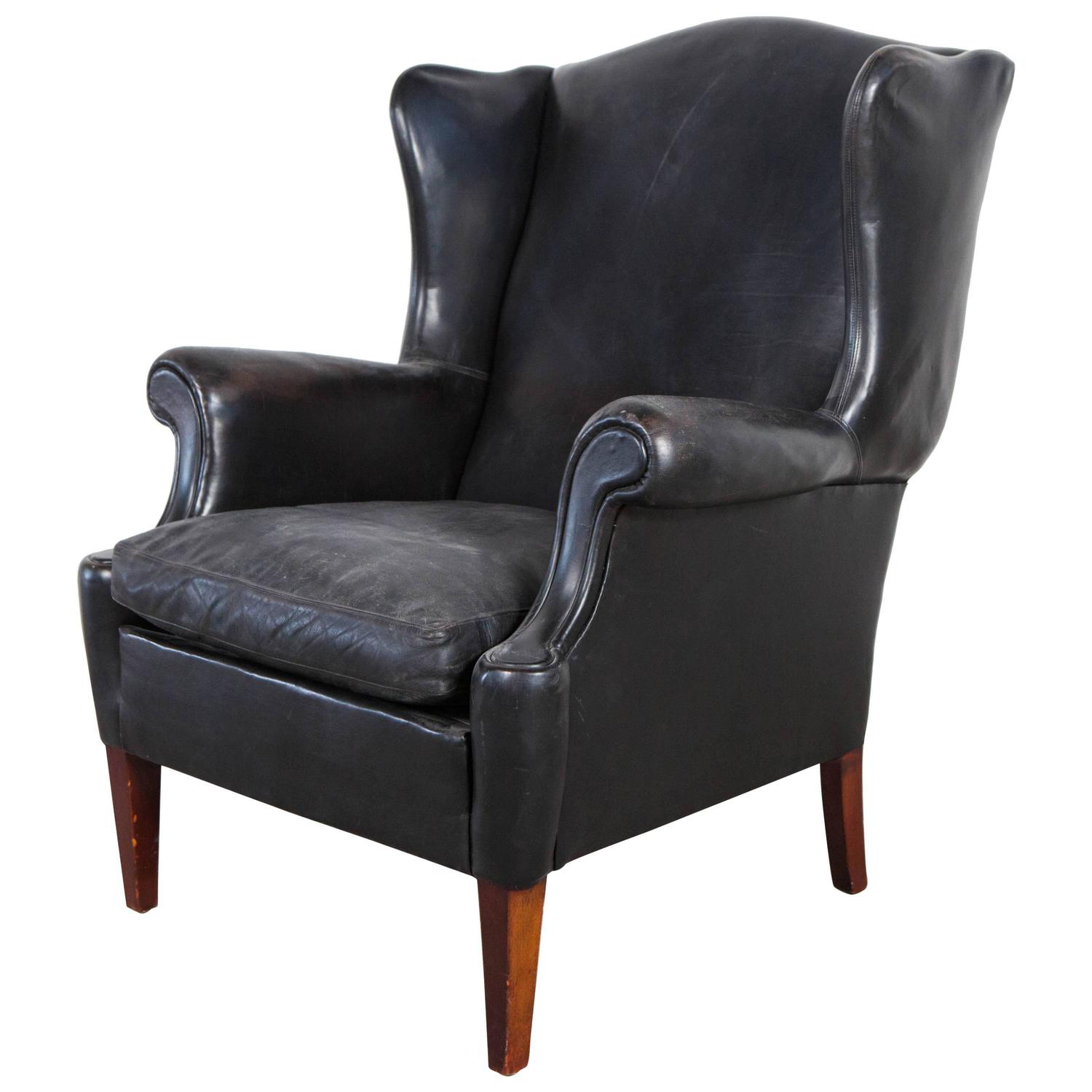Manufacturing & Materials

The creation of a high-quality black leather wing chair is a complex process, involving skilled craftsmanship and a careful selection of materials. From the initial choice of leather hide to the final stages of assembly, numerous steps contribute to the chair’s overall durability, comfort, and aesthetic appeal. Understanding these processes helps appreciate the value and longevity of a well-made piece.
Leather Selection and Tanning
The journey begins with selecting the leather hide. High-quality hides, often sourced from cattle raised specifically for their leather, are chosen for their thickness, texture, and lack of blemishes. The tanning process is crucial, significantly impacting the leather’s durability, feel, and appearance. Vegetable tanning, a traditional method, uses natural tannins derived from plant materials, resulting in a softer, more supple leather that ages gracefully but may be less durable than other methods. Chrome tanning, a more modern process, uses chromium salts, creating a more durable and water-resistant leather, though it may lack the natural character of vegetable-tanned leather. Other methods, such as aldehydes, also exist, each offering a unique balance of properties. The choice of tanning method directly influences the final product’s characteristics and cost.
Leather Types Used in Wing Chair Construction
Several types of leather are commonly employed in wing chair manufacturing, each possessing distinct properties affecting cost, durability, and aesthetic appeal. Full-grain leather, the highest quality, retains the hide’s natural grain and is highly durable and resistant to wear and tear. Top-grain leather, while still durable, is created by sanding the top layer of the hide to remove imperfections, resulting in a more consistent appearance but potentially reduced durability compared to full-grain. Bonded leather, the least expensive option, is made from leather scraps bonded together with polyurethane, offering a lower cost but considerably less durability and aesthetic appeal. Genuine leather is a broad term often used to describe leathers that are partially made of genuine leather but may include other materials.
Comparison of Leather Types
The table below summarizes the key characteristics of four common leather types used in furniture manufacturing:
| Leather Type | Durability | Cost | Maintenance Requirements | Visual Appeal |
|---|---|---|---|---|
| Full-Grain | High | High | Moderate | Natural, unique texture |
| Top-Grain | Medium | Medium | Moderate | Consistent, smooth texture |
| Bonded Leather | Low | Low | Low | Uniform, less natural |
| Genuine Leather (Partial) | Variable | Variable | Variable | Variable, depends on composition |
Manufacturing Process: From Hide to Finished Chair
The manufacturing process involves several key stages. First, the chosen leather hides are cut into patterns based on the wing chair’s design. These pieces are then carefully stitched together, often by hand for premium chairs, to form the chair’s body. The frame, typically constructed from hardwood such as oak or mahogany, provides the structural support. The leather is meticulously stretched and attached to the frame, ensuring a taut and comfortable fit. Finally, the chair undergoes quality control checks before receiving its final finishing touches, including the application of protective coatings. The assembly process requires precision and expertise to ensure a durable and aesthetically pleasing result.
Care, Maintenance, and Restoration of a Black Leather Wing Chair

Preserving the beauty and longevity of your black leather wing chair requires consistent care and attention. Regular cleaning and maintenance will prevent damage and ensure your chair remains a comfortable and stylish centerpiece for years to come. This guide Artikels the essential steps for cleaning, addressing common problems, and restoring your chair to its former glory.
Cleaning and Maintaining Black Leather
Regular dusting is crucial to prevent the accumulation of dirt and grime. Use a soft, dry cloth or a specialized leather duster to gently wipe down the entire surface of the chair at least once a week. For more thorough cleaning, use a leather cleaner specifically designed for black leather. Apply the cleaner sparingly to a soft, clean cloth and gently wipe the leather in the direction of the grain. Avoid saturating the leather, and always test the cleaner on an inconspicuous area first to ensure it doesn’t damage the finish. After cleaning, allow the leather to air dry completely. Conditioning the leather every few months with a high-quality leather conditioner will help maintain its suppleness and prevent cracking. Apply the conditioner sparingly and evenly, following the manufacturer’s instructions.
Addressing Common Problems, Black leather wing chair
Scratches are common occurrences on leather furniture. Minor scratches can often be buffed out with a leather conditioner or a specialized leather repair kit. For deeper scratches, a professional leather repair service may be necessary. Fading is another common problem, often caused by prolonged exposure to sunlight. To prevent fading, keep your chair away from direct sunlight and use window treatments to filter UV rays. Regular conditioning will also help to maintain the color vibrancy. Cracking can occur due to dryness or age. Regular conditioning is key to preventing cracking. If cracks have already formed, a leather repair kit may help to minimize their appearance, but professional restoration may be needed for significant damage.
Essential Tools and Products
A well-stocked leather care kit will ensure your chair remains in top condition. Here’s a list of essential items:
- Soft, dry cloth: For dusting and general cleaning.
- Leather duster: Specifically designed to attract and remove dust particles without scratching the leather.
- Leather cleaner: Choose a cleaner specifically formulated for black leather. Avoid harsh chemicals or solvents.
- Leather conditioner: Helps maintain the leather’s suppleness and prevent cracking. Select a conditioner appropriate for black leather.
- Leather repair kit: Contains tools and materials for repairing minor scratches and scuffs. Choose a kit that matches your leather’s color and type.
- Soft-bristled brush: For removing loose dirt and debris before cleaning.
- Microfiber cloths: Gentle and effective for cleaning and polishing.
